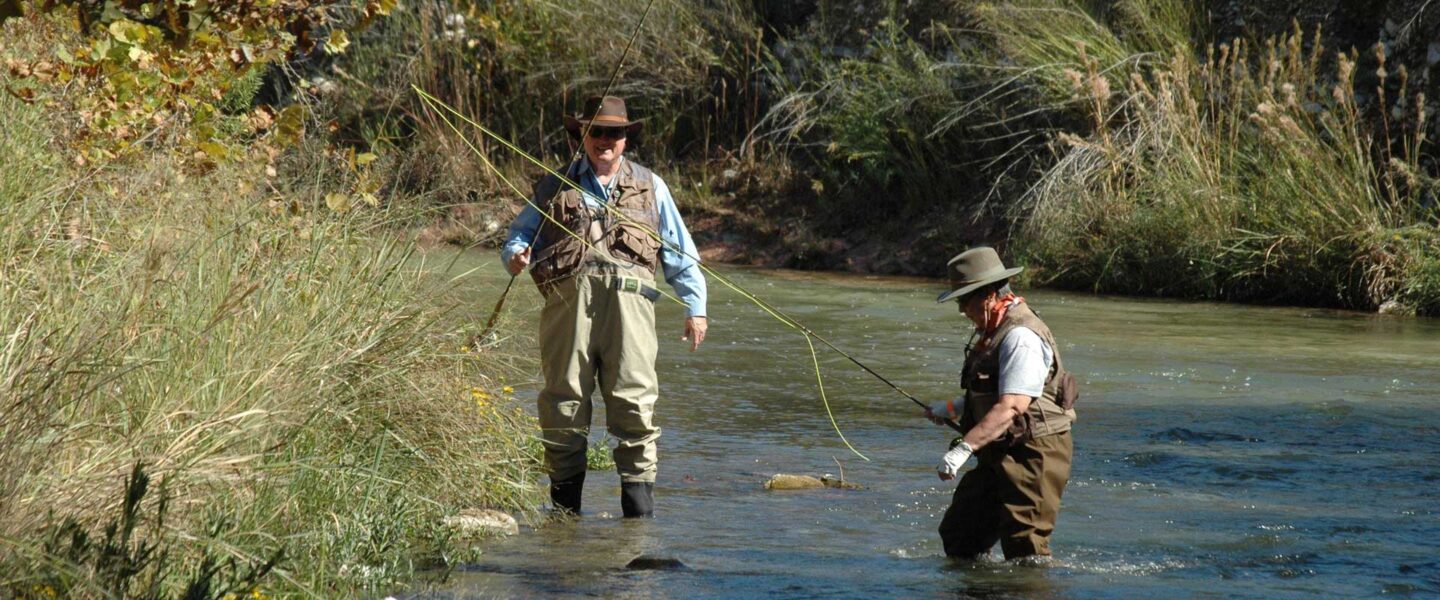
Welcome to the rivers and trees and hills of the Junction, Texas landscape. Our beautiful part of the Texas Hill Country is full of friendly locals as well as fun and exciting activities like kayaking, canoeing and tubing, unobstructed night skies, hiking, hunting, fishing, birdwatching, sightseeing, shopping, and of course, just plain relaxing. Here you will find information on what to do, where to stay, and where to eat if you are visiting the Junction area. If you are a local, you will find information on local Junction, Texas events and happenings. So come on in, and stay a while.
Junction the county seat of Kimble County, is on US Highway 83 ninety-eight miles southeast of San Angelo. It is named for its location at the confluence of the North and South Llano rivers. Junction was founded in the spring of 1876 following the organization of the county in January of that year. It was originally named Denman after its surveyor, but became Junction City in 1877 and simply Junction in 1894. Junction City won the role of county seat from Kimbleville, an unsuccessful settlement, in late 1876, after the first county court session, probably because Kimbleville was subject floods. By 1879, Junction city had a drugstore, a livery stable, a sawmill, and more than one general store. Theo post office, begun in 1876, was moved in 1879 from a private residence to the town square. Kimble County’s first newspaper, the West Texas, was published in Junction in 1882. In 1884, the county courthouse, erected in 1878, burned with all the county records. Its replacement, a two-story stone building, was partially destroyed by fire in 1888, but it was repaired and used until the present courthouse was built in 1929. Businessman Ernest Holecamp provided the city’s first waterworks with a canal dug from the South Llano to Junction in 1895. In 1896 a dam was built on the South Llano to provide power and water to the city and irrigation to surrounding lands. Four Mile Dam, a more permanent and extensive dam and irrigation system, was completed in 1904. Junction had a population of 536 in 1900, 8090 in 1910, and 1250 in 1920. Between 1910 and 1920 the automobile came to town. The first filling stations opened around 1916 or 1917. By the early 1920s the livery stable had closed, and Junction had graveled its streets and installed electric street lights.

By the Mid 1920s good highway connection s with San Angelo and Menard were available. Junction had Baptist, Christian, Episcopal, and Methodist Episcopal churches by 1881, when the latter was organized by Methodist circuit rider Andrew Jackson Potter. A Catholic church and a Church of Christ had come to Junction by 1933. By 1930 the town had incorporated, and the United States census of that year l8isted it population as 1,415. Junction was the chief shipping and commercial center of Kimble County, as well as a tourist resort and hunting center. In the mid-1940s the cedar-oil business developed and enhanced the economy, but the city’s growth slowed. The population was 1,464 in 1950 and 2,593 in 1980.

Junction continues to be the shipping and marketing center for Kimble County’s livestock, wool, mohair, pecan, and grain production. It is also the hunting center for one of the state’s leading deer-hunting counties. The town’s other economic foundations include pecan processing, tourism, and a cedar-oil plant. Texas Tech University Center, a branch of Texas Tech University, is located in Junction. Thee center can accommodate 250 students and offers both graduate and undergraduate courses. Public school students are transported by bus from around the county to the Junction school, which has consolidated the rural schools of Kimble County. The Kimble County Library is also housed in Junction, as are a hospital and nursing home. Major celebrations in Junction include the Billie Sale and Parade in August and the Kimble Kow Kick in September. In 1990 the propu8lation was 2,654. That figure fell slightly to 2,638 in 2005.



